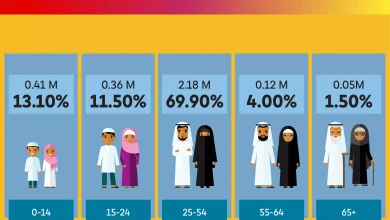Mumbai, the bustling financial capital of India, is not only one of the most populous cities in the country but also a vibrant hub of culture, commerce, and diversity. As of the latest estimates, Mumbai boasts a population of approximately 20 million people, making it one of the most densely populated urban areas in the world. The city’s demographic landscape is characterized by its multifaceted communities, each contributing to the rich tapestry of Mumbai’s social fabric.
Historical Context
The history of Mumbai’s population can be traced back to its early settlements, which began around the 3rd century BC. The city’s name is derived from the local goddess Mumbā and the Portuguese word “Bom Bahia,” meaning “Good Bay.” The establishment of the city as a significant port during the British colonial period in the 18th century played a pivotal role in attracting migrants from various parts of India and abroad, thereby setting the stage for its rapid population growth.
Demographic Composition
Mumbai is a melting pot of cultures, religions, and languages. The city is home to a diverse population that includes Hindus, Muslims, Christians, Sikhs, Jains, and Buddhists, among others. The linguistic diversity is equally notable, with Marathi, Hindi, Gujarati, and English being the most widely spoken languages. This heterogeneity not only enriches the city’s cultural landscape but also fosters a unique social atmosphere that is both dynamic and inclusive.
Migration and Urbanization
Mumbai’s population has surged due to massive rural-to-urban migration. Individuals from various states, particularly Maharashtra, Uttar Pradesh, Bihar, and Gujarat, flock to the city in search of better employment opportunities, educational prospects, and improved living standards. This influx of migrants has led to the rapid urbanization of Mumbai, transforming it into a sprawling metropolis marked by high-rise buildings, expansive slums, and a bustling informal economy.
Economic Drivers
The economic landscape of Mumbai is a crucial factor influencing its population dynamics. As the financial capital of India, Mumbai hosts the Bombay Stock Exchange, numerous multinational corporations, and a thriving film industry, commonly referred to as Bollywood. The promise of jobs in sectors such as finance, entertainment, and technology continues to attract individuals from across the country, further contributing to the city’s burgeoning population.
Challenges of Overpopulation
While Mumbai’s population growth fuels economic vibrancy, it also presents significant challenges. Overcrowding has led to severe strain on the city’s infrastructure, including transportation, sanitation, and housing. The local government struggles to provide adequate services to meet the needs of its rapidly expanding populace. Slums, which house a substantial portion of the city’s residents, are often characterized by inadequate access to clean water, sanitation, and healthcare facilities.
Social and Environmental Impact
The sheer density of Mumbai’s population has profound social implications. Issues such as traffic congestion, pollution, and inadequate public services are commonplace, affecting the quality of life for many residents. Moreover, the environmental challenges posed by urbanization—such as waste management and the depletion of green spaces—require immediate attention from policymakers and urban planners.
Conclusion
Mumbai, with its vast and diverse population, stands as a testament to the complexities of urban life in the 21st century. As the city continues to grow, it remains essential for stakeholders—government officials, urban planners, and civil society—to address the challenges of overpopulation while harnessing the opportunities that arise from its dynamic demographic landscape. Sustainable development initiatives, inclusive urban planning, and effective governance will be crucial in ensuring that Mumbai remains not only a thriving economic center but also a livable and vibrant city for all its residents.
References
- Census of India 2021. (2022). Government of India.
- Mumbai: A City Like No Other. (2023). Urban Studies Journal.
- Sharma, A. (2022). The Impact of Urbanization on Mumbai’s Infrastructure. Journal of Urban Affairs.
- Rathi, P. (2021). Migration Patterns in Mumbai: Trends and Implications. Indian Journal of Sociology.
This exploration of Mumbai’s population highlights the interplay of history, culture, and economic opportunity that defines this remarkable city, emphasizing the importance of sustainable growth in the face of its challenges.




